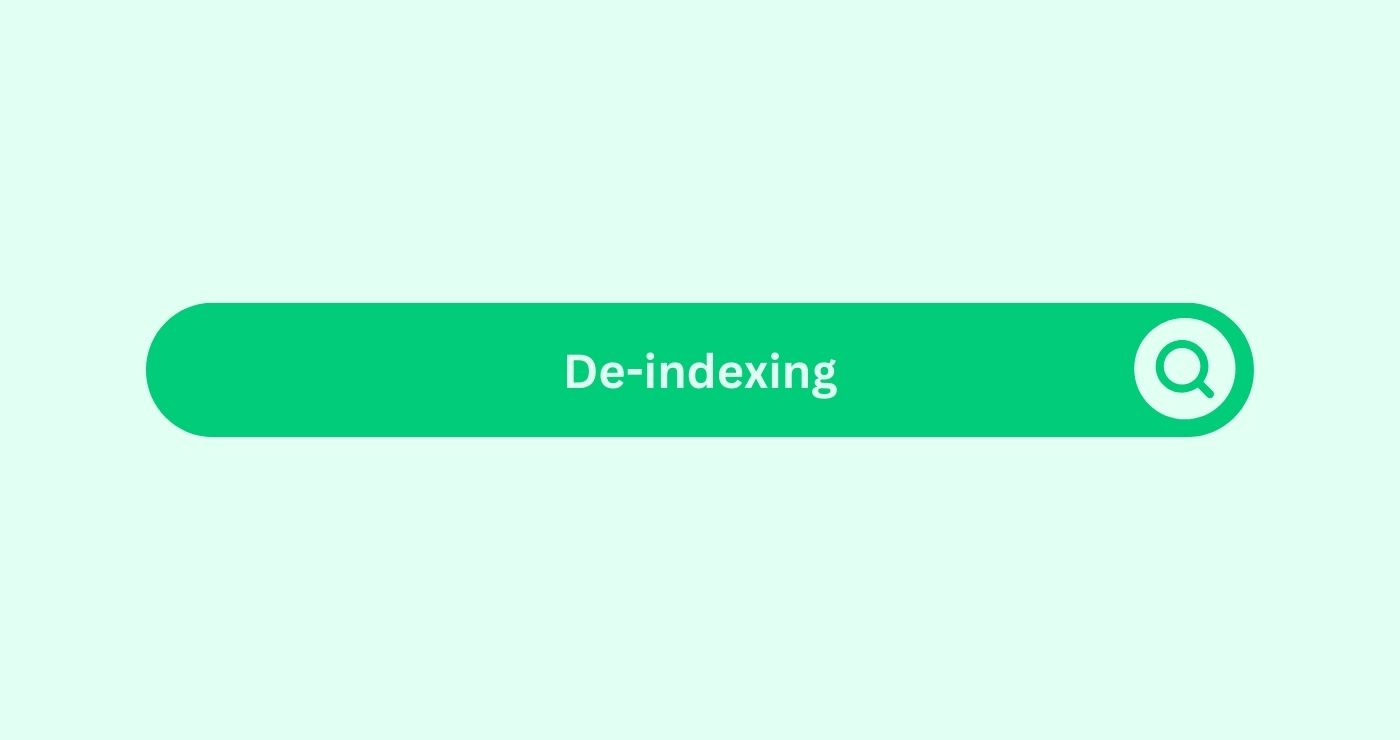Definition
De-indexing refers to the removal of a web page or an entire website from search engine results. This process happens when search engines, like Google, exclude specific content from their databaseDefinition A database in social media marketing is a structu..., making it inaccessible through searches. De-indexing can occur voluntarily, where website owners use directives like “noindex” tags to hide pages, or involuntarily, due to penalties from search engines for violating guidelines.
Common causes include duplicate contentDefinition Duplicate content in the SEO space refers to iden..., thin pages with little value, or spam-like practices. Ensuring high-quality content and following SEO best practices helps avoid de-indexing and maintains visibility. Regular monitoring keeps websites optimised for search engines.
In SEO, de-indexing is the process by which search engines remove web pages from their index, renderingDefinition Rendering, in the context of SEO. refers to the p... them invisible in search results. This can occur due to manual actions by search engine operators or algorithmic penalties.
How De-indexing
If a website contains low-quality or duplicate contentDefinition Duplicate content in the SEO space refers to iden... that violates search engine guidelines, webmasters may choose to de-index those pages to avoid penalties and maintain the overall health of their site.
how to use de-indexing effectively, along with examples:
| Method | Purpose | How to Implement | Example |
|---|---|---|---|
| Meta Robots TagDefinition The Meta Robots Tag is an HTML meta tag used to c... | To de-index specific pages from search engines. | Add a <meta name="robots" content="noindex"> tag in the <head> section of the HTML file. | Example: You want to hide a thank-you page after a form submission. Add this to the HTML: <meta name="robots" content="noindex">. |
| Robots.txtDefinition Search engine crawlers use directives from Robots... File | To prevent crawlersDefinition Crawlers, or spiders, are search engine tools tha... from accessing specific parts of your website. | Update the robots.txtDefinition Search engine crawlers use directives from Robots... file in the root directory of your website to disallow certain pages or folders. | Example: You want to block a folder /private-data/. Add this to robots.txtDefinition Search engine crawlers use directives from Robots...: User-agent: *Disallow: /private-data/ |
| Noindex HTTP Header | To de-index dynamically generated pages. | Configure your serverDefinition A Server in the SEO space refers to a computer sy... to include the X-Robots-Tag: noindex header in HTTP responses for specific pages. | Example: Use the header X-Robots-Tag: noindex for PDFs or files you don’t want indexed. |
| Google Search ConsoleDefinition Google Search Console is a free web service from ... | To remove pages manually from Google’s index. | Use the “URL Removal” tool in Google Search ConsoleDefinition Google Search Console is a free web service from ... to request temporary de-indexing. | Example: Submit /example-page for removal via Google Search ConsoleDefinition Google Search Console is a free web service from ... if the page is outdated or irrelevant. |
| Canonical Tag (Advanced) | To consolidate duplicate contentDefinition Duplicate content in the SEO space refers to iden... and prevent indexingDefinition Indexing in content marketing involves search eng... of duplicates. | Add a canonical tag to the duplicate page, pointing to the preferred version of the page. | Example: If /product-page-duplicate exists, add <link rel="canonical" href="https://example.com/product-page"> in its <head> tag. |
Key Notes:
- Use “noindex” carefully: Avoid applying it to essential pages like the homepage or high-traffic content.
- Verify changes: After implementing de-indexing, test the results using tools like Google Search ConsoleDefinition Google Search Console is a free web service from ... or “URL Inspection.”
- Temporary or Permanent: Choose the method based on whether de-indexing is needed temporarily or permanently.
Key Takeaways
- Penalty Avoidance: De-indexing is often used to prevent penalties from search engines for violating their quality guidelines.
- Content Cleanup: It helps in removing low-quality or duplicate contentDefinition Duplicate content in the SEO space refers to iden... from search engine indexes to improve overall site quality.
- Algorithmic Actions: De-indexing can occur automatically due to search engine algorithms detecting violations.
- Manual Actions: In some cases, webmasters may request the de-indexing of specific pages through search engine webmaster toolsDefinition Google's Search Console is a free tool for webmas....
- Recovery Process: Websites can work on fixing issues leading to de-indexing and submit reconsideration requests to restore their visibility in search results.
FAQs
What causes the de-indexing of web pages?
De-indexing can occur due to violations of search engine guidelines, such as thin contentDefinition Thin content refers to web pages with minimal, lo..., duplicate contentDefinition Duplicate content in the SEO space refers to iden..., or spammy tacticsDefinition Spammy Tactics in the SEO realm refer to deceptiv....
Can de-indexed pages be re-indexed?
Yes, webmasters can fix issues leading to de-indexing and request re-indexing through search engine webmaster toolsDefinition Google's Search Console is a free tool for webmas....
How long does it take for de-indexed pages to be re-indexed?
The time taken for re-indexing depends on factors like the severity of the violation and the actions taken to rectify it. It may vary from days to weeks.
Does de-indexing affect the entire website?
De-indexing typically affects specific pages rather than the entire website, although severe violations may impact the entire site's visibility.
Can competitors de-index my website's pages?
While it's technically possible for competitors to report violations leading to de-indexing, search engines assess the validity of such reports before taking action.
What is the difference between de-indexing and penalisation?
De-indexing refers to the removal of pages from search engine indexes, while penalisation involves receiving a ranking penalty for violating guidelines.
How can I prevent de-indexing of my website's pages?
Focus on creating high-quality, original content, adhere to search engine guidelines, and regularly monitor your site for any issues that may leadDefinition A Lead in the context of SEO refers to a potentia... to de-indexing.
Is there a limit to the number of pages that can be de-indexed from a website?
There is no specific limit, but search engines may de-index pages if they detect violations regardless of the number.
Can de-indexing affect website traffic?
Yes, de-indexing can significantly reduce website trafficDefinition In the context of SEO (Search Engine Optimisation... as affected pages become inaccessible in search results.
What should I do if my website's pages are de-indexed?
Identify and address the issues causing de-indexing, such as thin or duplicate contentDefinition Duplicate content in the SEO space refers to iden..., and submit reconsideration requests to search engines after rectifying them.




